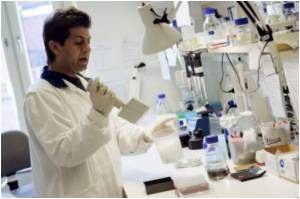At Aarhus University, researchers have taken an important step in the fight against sleeping sickness, a disease that is a major problem in parts of Africa.

The deadly disease is caused by a parasite that is transferred to people via the bite of the African tsetse fly. The parasite lives in the bloodstream where it absorbs haemoglobin from human red blood cells. However, if left untreated it can infect the central nervous system and cause a coma-like state.
Haemoglobin is important for the parasite as it contains what are known as 'haem groups', which it cannot produce itself. The researchers have now discovered precisely how the parasite finds this crucial haemoglobin in humans. With the new knowledge it will be possible to develop targeted treatments and fight the disease much more effectively.
The results have recently been published in the scientific journal Nature Communications.
Desperate need for better treatment The new knowledge makes it possible to improve the treatment of sleeping sickness.
"The drugs currently being used are not very effective and have many side-effects. The treatment is particularly difficult once the parasite has infected the central nervous system. At this point, as many as five percent of the patients die from the side effects. Our discovery certainly provides new perspectives for a more effective treatment with fewer side effects, something that is very much needed," says Associate Professor Christian Brix Folsted Andersen from Aarhus University, who is one of researchers behind the study.
Advertisement
"The parasite has developed a mechanism so that it can directly recognise haemoglobin. It does this via a receptor on the cell, that's to say a molecule, which binds very strongly to the haemoglobin. We have now uncovered precisely how the receptor binds to the haemoglobin," explains postdoc Kristian Stødkilde-Jørgensen from Aarhus University, who has also participated in the study.
Advertisement
"Now that we know how the receptor interacts with the haemoglobin we have the possibility to develop targeted medicines. For example, an artificial haemoglobin coupled to a toxin that will kill the parasite. Or a compound that blocks the interaction between receptor and haemoglobin so that the parasite cannot absorb haemoglobin" says Christian Brix Folsted Andersen.
Source-Eurekalert










